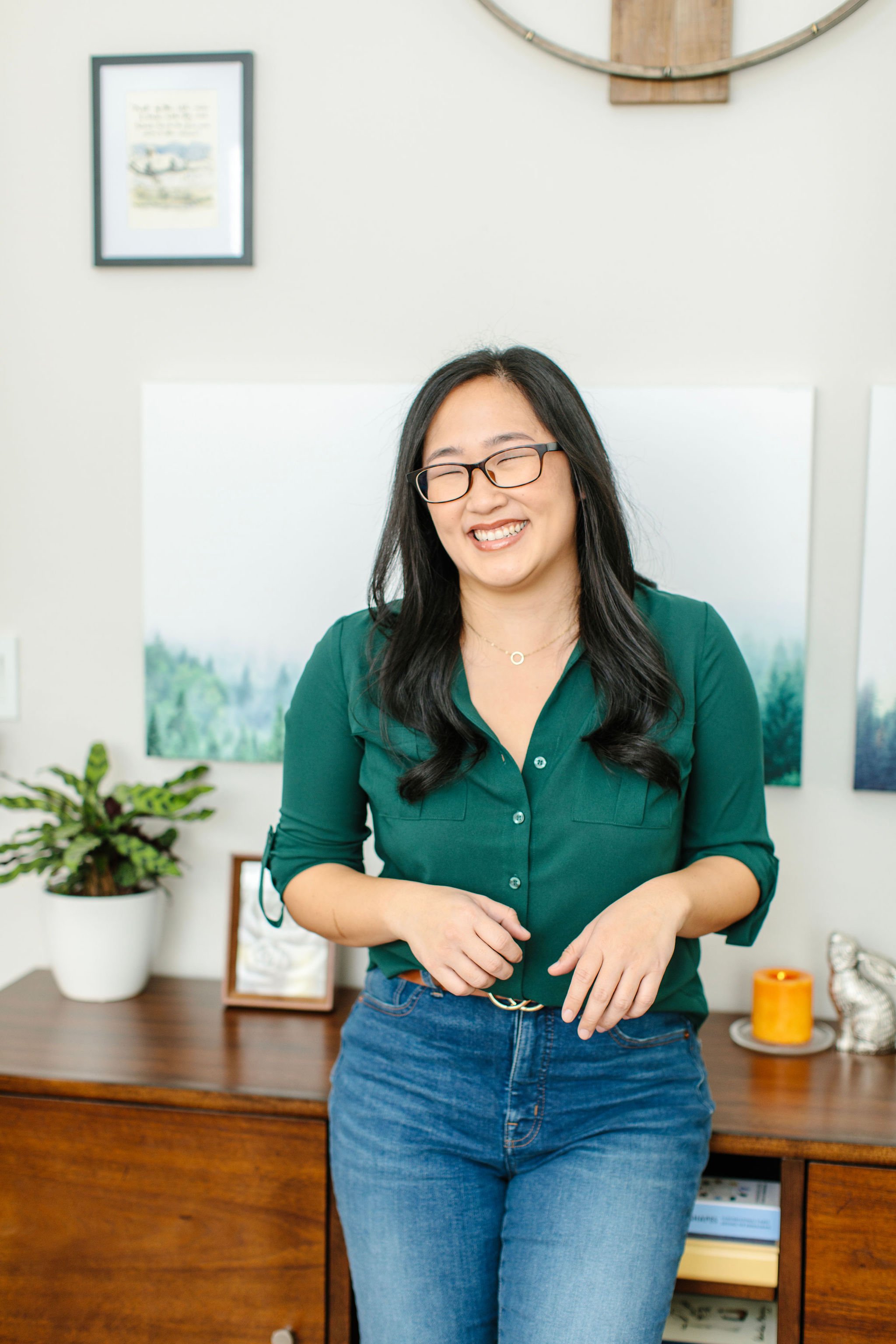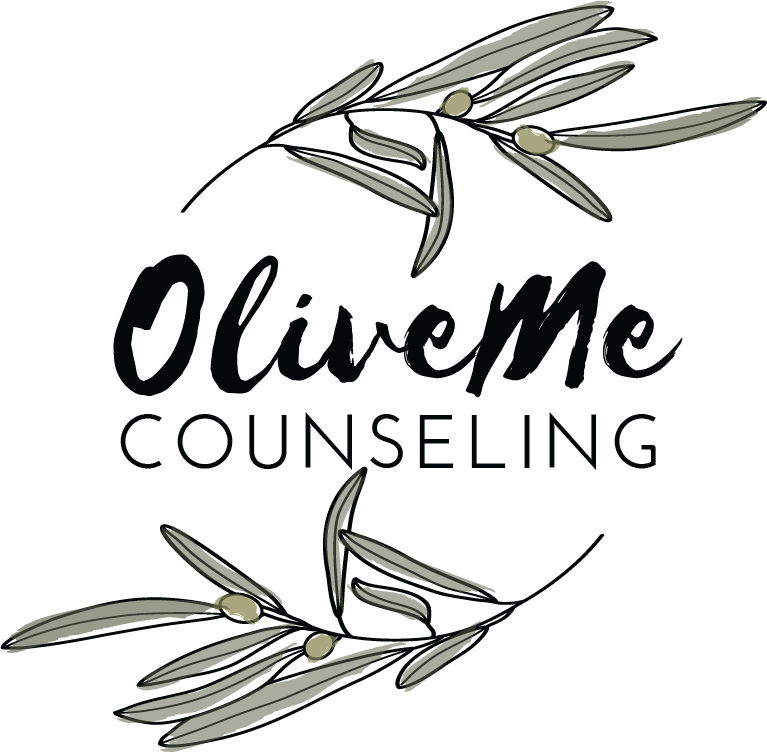
The Enneagram is a personality framework about our reactive patterns of thinking, feeling, and doing. There are nine universal human motivators and ways of seeing, experiencing, and responding to life.
Our Enneagram type describes how we SURVIVED painful situations when we were younger (and more vulnerable and powerless), but where we get STUCK as adults. The very cage that protected us before becomes the very cage that keeps us trapped when we outgrow it.
Each Enneagram type has a different dynamic with each of the BIG 5 Emotions (MAD, SAD, GLAD, SCARED, and NUMB). Some overdo some emotions (“Top 2 emotions”) while underdoing others (“Bottom 2 emotions”).
Here’s how to interpret the arrows:
Red up arrows - strongly dominant
(what emotion that Enneagram type OVERLY does and needs to practice doing LESS).
Blue down arrows - strongly repressed
(what that type UNDERLY does and needs to practice doing MORE)Black arrows - slight tendency towards relying on that emotion (up) or against that emotion (down)
The text beneath the arrows give some extra info on WHY that Enneagram type has that tendency with a given emotion or WHAT that type might say about that feeling.
*A Note on Subtypes
Though there are 9 Enneagram types, there are 3 subversions per type based on the human instincts of Self-Preservation (SP), Social (SO), and Sexual (SX). Some subtypes have particular emotional habits that what those Types are known for - this is especially the case for Types 4s and 6s.
Hence, if you’d like to use the Enneagram to grow emotionally, it might be helpful to know yourself on an instinct level as well.
These three instincts (rooted in our reflexive lizard brain) are like the barrel of the cannon that directs where the firepower of the Types goes:
Self-Preservation (SP): towards our physical well-being and practical matters (food, shelter, comfort), focused on themes of safety, security, trust, and preparation
Social (SO): towards the needs and experiences of the groups we belong to/feel excluded from, focused on themes of power, influence, strategy, and belonging
Sexual (SX): towards our intimate relationships with attachment figures (parents, partners, kids, and other “chosen” people), focused on themes of intensity, competition, expression, and exclusivity
The subtypes are important because of what’s called the countertype (the version of the Type that doesn’t look like the Type). Countertypes tend to do the OPPOSITE of what that Type is known for. For example, as a Self-Preservation 4, I am a 4 that doesn’t look like a 4; rather than being emotionally expressive, I am very emotionally reserved.
If you have a hard time finding your type, it might be because you are a countertype. Check out this blog to learn more about finding your type.
Need help with your emotional habits?

If you’d like to learn more about how to work WITH your emotions so that you can work OUT of your reactive patterns, check out this 1-hour masterclass on emotions!
I was a panelist at the EnneaSummit for the Heart Type Panel hosted by Tyler Zach (Enneagram 3).
In this video, six panelists give firsthand accounts about what it's like to be an Enneagram 2, 3, or 4.
If you're eager and intentional about personal growth, here are 5 reasons why I think you def should consider attending one of Beatrice Chestnut & Uranio Paes' type-specific Enneagram retreats.
How we dress or present ourselves is one way our inner world shows up on the outside (for better or worse!). Check out how personal styling with the Enneagram in mind can help you discover your authentic style and build confidence in how you show up in the world!
Did you know that some people can have negative reactions about REST, relaxation, stillness, vacation, play? In this blog, I share about going from being someone who rarely takes breaks to now having regular vacations multiple times a year.
Not all Enneagram types have an easy time celebrating their birthdays! Here are some reasons why some of us might have a hard time, as well as some tips on how to take good care of you!
The three Enneagram instincts (Self-Preservation, Social, and Sexual) instincts show up in the way we engage our lives and creative endeavors. Check out this conversation with Rim from The Empowered Sensitive and Creative Podcast!
Each of the nine Enneagram types point out the universal human motivations and themes that make the “colored” lens through which we see life. Which one is yours?
Melissa Smith from the podcast “High Vibe Mindset” invited me to talk about emotional growth and the Enneagram types. Here is the transcript of our illuminating conversation spanning all nine types and how they can grow beyond their behavioral patterns.
Joanne Kim (OliveMe Counseling) and Melinda Olsen (Inviterra Counseling) join Nikhil Sharma (AlignUs World) in a six-part series to introduce the Enneagram - a personality framework that reveals our subconscious patterns. Check out the sixth part of this series here on the Enneagram Body Types!
Joanne Kim (OliveMe Counseling) and Melinda Olsen (Inviterra Counseling) join Nikhil Sharma (AlignUs World) in a six-part series to introduce the Enneagram - a personality framework that reveals our subconscious patterns. Check out the fifth part of this series here on the Enneagram Heart types - the feelers (Enneagram 2, 3, 4)
Joanne Kim (OliveMe Counseling) and Melinda Olsen (Inviterra Counseling) join Nikhil Sharma (AlignUs World) in a six-part series to introduce the Enneagram - a personality framework that reveals our subconscious patterns. Check out the second part of this series here!
Joanne (OliveMe Counseling) and Melinda (Inviterra Counseling) are Enneagram therapists who love helping people grow beyond their reactive patterns of thinking, feeling, and doing. Listen to part 4 of their 4-part series as they discuss the Head Triad and their central emotion of fear.
Joanne (OliveMe Counseling) and Melinda (Inviterra Counseling) are Enneagram therapists who love helping people grow beyond their reactive patterns of thinking, feeling, and doing. Listen to the introduction of their 4-part series as they discuss emotions, the Enneagram, the three Centers of Intelligence and dominant instincts.
I had the pleasure of being interviewed by Elizabeth Irias on the podcast Light Up The Couch. Beth and I talked about all nine Enneagram Types as well as how therapists can integrate the Enneagram into their practice.
Marianna Torres shares what it’s like to be a Enneagram Type 8 (aka “The Challenger”). “I wish people knew how to understand my assertive nature and to not take it like a personal attack.” Read more to learn about Type Eights.
Jenna Cox-Hadley (Enneagram 3) shares her song called Potential. Every day comes with the potential that anything could happen, and with the overwhelming dread that, well, anything could happen. Is it possible for us to take calculated risks without destroying our own zest for the joys of life? Have a sneak peek into the inner world of an Enneagram Type Three!
Each of the nine Enneagram types have autopilot patterns of thinking, feeling, and doing that also show up at work, for better or for worse. Learn what your strengths, limitations, and growth steps are so you can have deeper, greater impact as your own type of leader!
Enneagram Type Fives (Type 5s) are not great at small talk. We’d much rather get to what you know and what makes you tick. We understand that everyone is an expert in something, even if they don’t know it. Read about what it’s like being a Type One from Alyssa,the CEO and founder of The Karuna Lab Life Coaching services.
Though we have all three Centers of Intelligence (head, heart, body), there's WAY too much emphasis on Head Center especially in the Westernized world. Read the blog to learn how to reconcile and integrate all three.
Each of the human survival instincts - Self-preservation (SP), Social (SO), and Sexual (SX) - have their respective bias towards certain relationship habits. See which one resonates with you.
Melissa Moore from the podcast “Faith Hope Love with Melissa Moore” invited me to talk about life as an Enneagram Four. Listen to our conversation or read the transcript here.
Read this blog to learn some of the things that stood out to me personally at the Chestnut Paes Enneagram Academy's Retreat.
If you're eager and intentional about personal growth, here are 5 reasons why I think you def should consider attending one of Bea & Uranio's Enneagram retreats.
Beatrice Chestnut and Uranio Paes Enneagram workshops and retreats became the milestone markers of how I've healed and grown over time, as I vividly remember what I was working through each of those moments.
It's so important to not judge ourselves for having done what we said we wouldn't do, or not doing what we said we would do. We can’t change by shaming ourselves.
All of us have the capacity of being self-referencing or others-referencing - using ourselves and others as reference points for life, respectively. But what’s the difference between being self-referencing and being selfish, and being others-referencing and being generous? How can we grow beyond our Enneagram type by practicing both options?
I have a love/hate relationship with the fact that the Enneagram is picking up in popularity. I LOVE that more people have heard about it. I HATE that the information that's being passed around is the exact OPPOSITE of what the Enneagram was meant for.
Here's a bit of tongue in cheek for you, somewhat based on my observations as an Enneagram therapist. (I'm half joking...and half serious.)
© Copyright 2022 Joanne B. Kim. All rights reserved.
JOANNE B. KIM, LMFT

Joanne is a Licensed Marriage & Family Therapist and Certified Brainspotting Practitioner in San Jose, CA. She helps people EXHAUSTED by anxiety, shame, and an allergic reaction to anger create VIBRANT relationships where they matter, too.
Many of her clients are:
(1) the highly responsible, conscientious, and empathic types
(2) Enneagram Type Ones, Twos, Fours, or Nines
(3) Highly Sensitive Persons (HSPs)
The most common words spoken by those who’ve sat with Joanne:
“I thought it was just me. I’m NOT crazy!”
“I can finally figure out what to do with all these feelings!”



































I was a panelist at the EnneaSummit 2024 for the Enneagram Practitioner Panel.
In this panel, we share our experiences and observations about what different Enneagram types think they need in therapy, what they actually need, and some important growth steps so they can grow beyond their type.